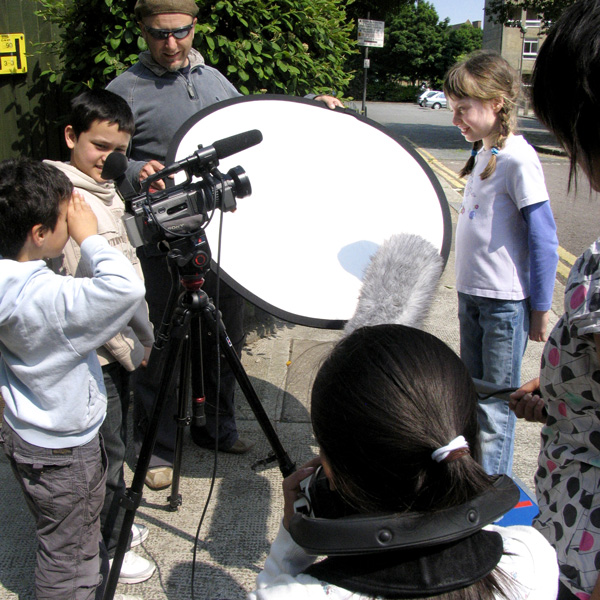Documentary
Documentary films capture reality as it unfolds and that's why they are an exciting way to tell stories. The subjects in a documentary are not actors but real people. The answers aren't scripted beforehand, but this doesn't mean you don't have to prepare. It would be a mistake to go into a situation and wait for something interesting to happen. You must have an idea of what story you want to tell, which experiences you want to capture, which people you want to interview and what point you want to make overall.
Research
Thorough research will help you identify: the people you want to feature, the theme of your film and the locations you want to film them in. Don't be afraid to ask questions, but always be sensitive to how people might feel about revealing their emotions on camera.
Interviewing tips
- Be polite if interviewing someone you don't know, be polite if it is someone you do know
- But aim to be friendly and relaxed whoever they are, building trust is important
- Smiles and genuine interest puts people at ease
- Don't be afraid to follow a question up if someone says something interesting
- Concentrate all the time on what your interviewee is saying, if they go off the boil, and lose their thread, use lines like: 'you mentioned such and such earlier, could you tell us a little more about that!'
Some people might just answer yes or no. Taylor your questions to squeeze out a longer answer, by adding in lines like:
- Tell me a story about the time you....
- And how does that make you feel....
- Describe to me....
- Tell me a bit more about....
- And what led up to that happening....
Groups
Try not to cover groups talking, you get more considered and honest responses when there are fewer people around, and it is easier for your sound crew.
A neat site with documentary directors talking about their craft, from the National Film Board of Canada.
You can just see the mic in a windsock beneath the subject
However, if you have an unexpected group of people you might find it useful to direct questions to each person in turn: 'Can I ask this question to Katie first - "How do you think the situation in the playground has developed since....". The sound team must be on the ball, it's a pity if they still have the mic on Jamie when Katie comes out with a gem.
Where to film
Find somewhere quiet and comfortable to film. It won't help if you hold your interview at the front of the class with everyone else watching. If you are filming away from school, think where might be appropriate. Your subject's natural habitat might be best, but always be aware of sound and management; a market stall holder would look great in front of their stall; but arrange an early slot, when it is quieter and they won't be losing customers.
Images to illustrate your story
As well as having fabulous interviews, you will also need imagery to illustrate your story. There is lots more information on camera work on this site but a few quick tips for gathering footage might be:
- create carefully composed shots rather than wildly panning from one thing to another
- short, varied shots are best - but don't accidentally stop recording just when something good happens
- get in close - because the sound will be better & you will probably get more interesting shots
- to make the camera steadier: zoom out to your widest setting, hold the camera close to your body to steady it, or rest the camera on something
This lighthearted film about documentaries is quite a good explainer for younger groups.
